Email sales@AllianceChemical.com for 24/7 Expert Support
-
512-365-6838
-
Monoethanolamine (MEA) ACS Grade
Category : Alcohols
$21.95
Liquid error (snippets/product-blocks line 100): divided by 0
Off
Unit price
/
Shipping Notice: Possible Hazmat Fees
💡 Smart Shipping Tip: Quart & Liter Sizes Often Avoid Hazmat Fees
This size may be classified as hazmat and can incur additional carrier fees. See shipping guide
- ✅ Good news: 1 Quart containers qualify as "Limited Quantity" and bypass hazmat rules
- 💡 Pro tip: Order multiple 1 Quart containers to avoid hazmat fees entirely
- 💰 Hazmat fees can get expensive - especially for larger containers (carrier charges, not our markup)
- 🚚 Ground shipping only - no expedited options for sizes over 1 Qt/1L
Required by 49 CFR § 173.150 for chemical containers larger than 1 quart. Actual fees shown at checkout. View our complete shipping guide →
✅ Great Choice! No Hazmat Fees
1 Quart containers qualify as "Limited Quantity" and avoid hazmat shipping fees.
- 🚀 Faster shipping: Eligible for expedited shipping options including air transport
- 💰 No hazmat fees: Ships as "Limited Quantity" per DOT regulations
- 📦 Convenient size: Perfect for testing or smaller applications
- ♻️ Smart choice: Order multiple quarts to get the volume you need without hazmat charges
Exempted under 49 CFR § 173.150 Limited Quantity provisions for containers ≤1 liter/quart. Learn more in our shipping guide →
Quantity
Size:
Variation:
-
$21.95Delivery every$20.85
-
$32.99Delivery every$31.34
-
$50.36Delivery every$47.84
-
$79.95Delivery every$75.95
-
$53.90Delivery every$51.21
-
$89.69Delivery every$85.21
-
$149.21Delivery every$141.75
-
$4,529.18Delivery every$4,302.72
-
$203.12Delivery every$192.96
-
$771.55Delivery every$732.97
-
$5,831.66Delivery every$5,540.08
-
$541.80Delivery every$514.71
-
$1,699.44Delivery every$1,614.47
-
$5,677.91Delivery every$5,394.01
-
$6,714.31Delivery every$6,378.59
-
$7,654.31Delivery every$7,271.59
$21.95
Liquid error (snippets/product-sticky-blocks line 69): divided by 0
Off
Unit price
/

Monoethanolamine (MEA) ACS Grade
$21.95
Liquid error (snippets/sticky-product line 56): divided by 0
Off
Unit price
/
Size:
Variation:
-
$21.95Delivery every$20.85
-
$32.99Delivery every$31.34
-
$50.36Delivery every$47.84
-
$79.95Delivery every$75.95
-
$53.90Delivery every$51.21
-
$89.69Delivery every$85.21
-
$149.21Delivery every$141.75
-
$4,529.18Delivery every$4,302.72
-
$203.12Delivery every$192.96
-
$771.55Delivery every$732.97
-
$5,831.66Delivery every$5,540.08
-
$541.80Delivery every$514.71
-
$1,699.44Delivery every$1,614.47
-
$5,677.91Delivery every$5,394.01
-
$6,714.31Delivery every$6,378.59
-
$7,654.31Delivery every$7,271.59
Ask a question
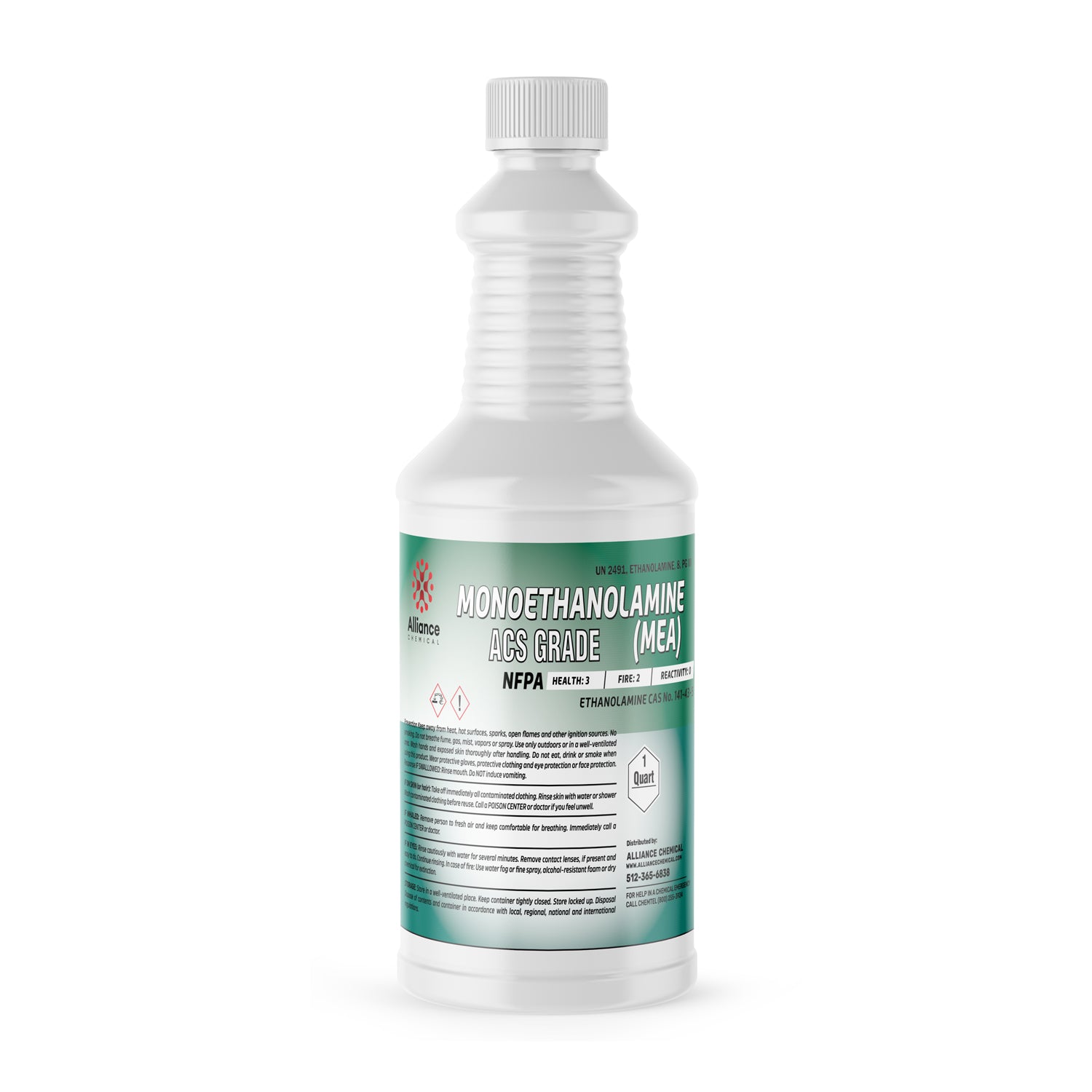
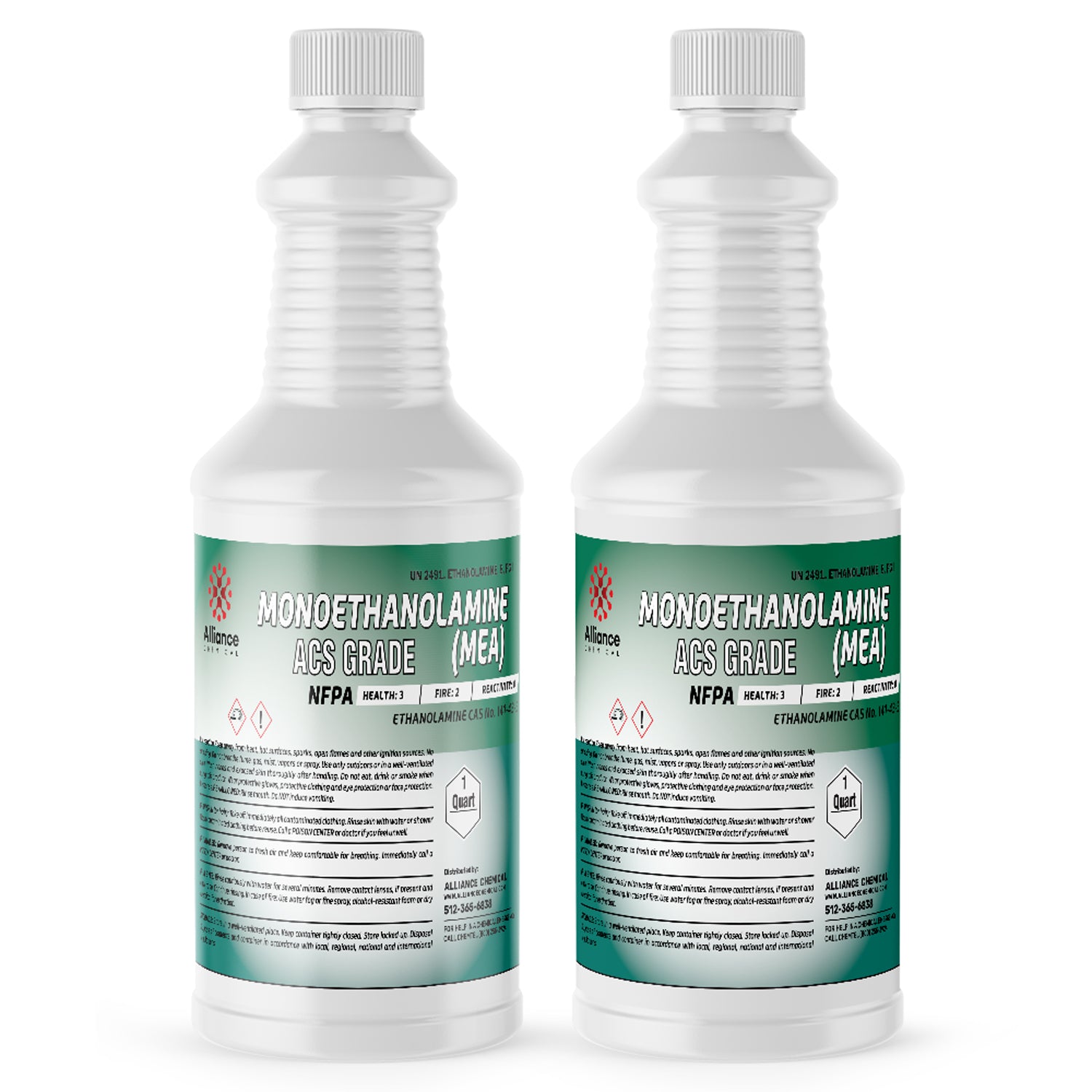
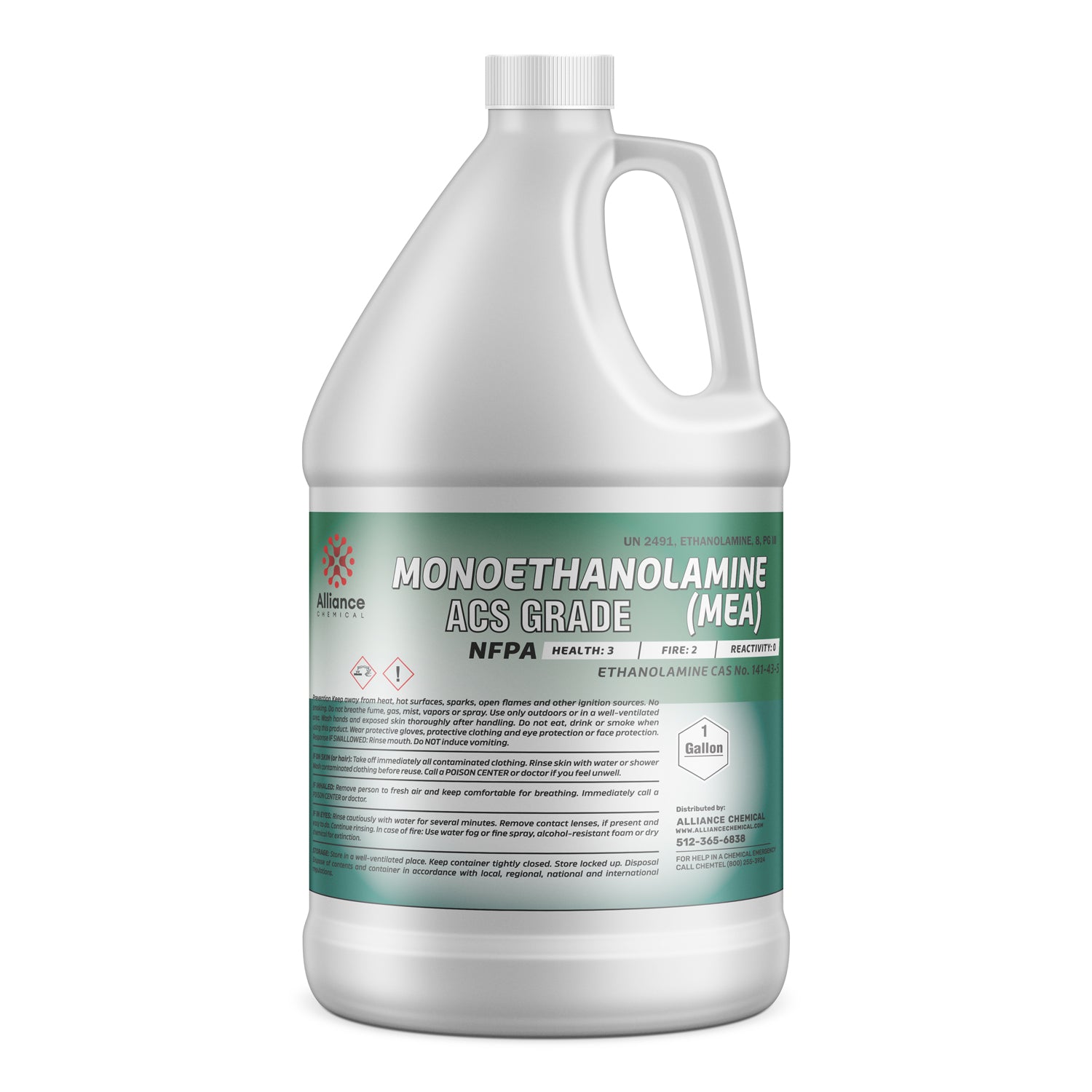
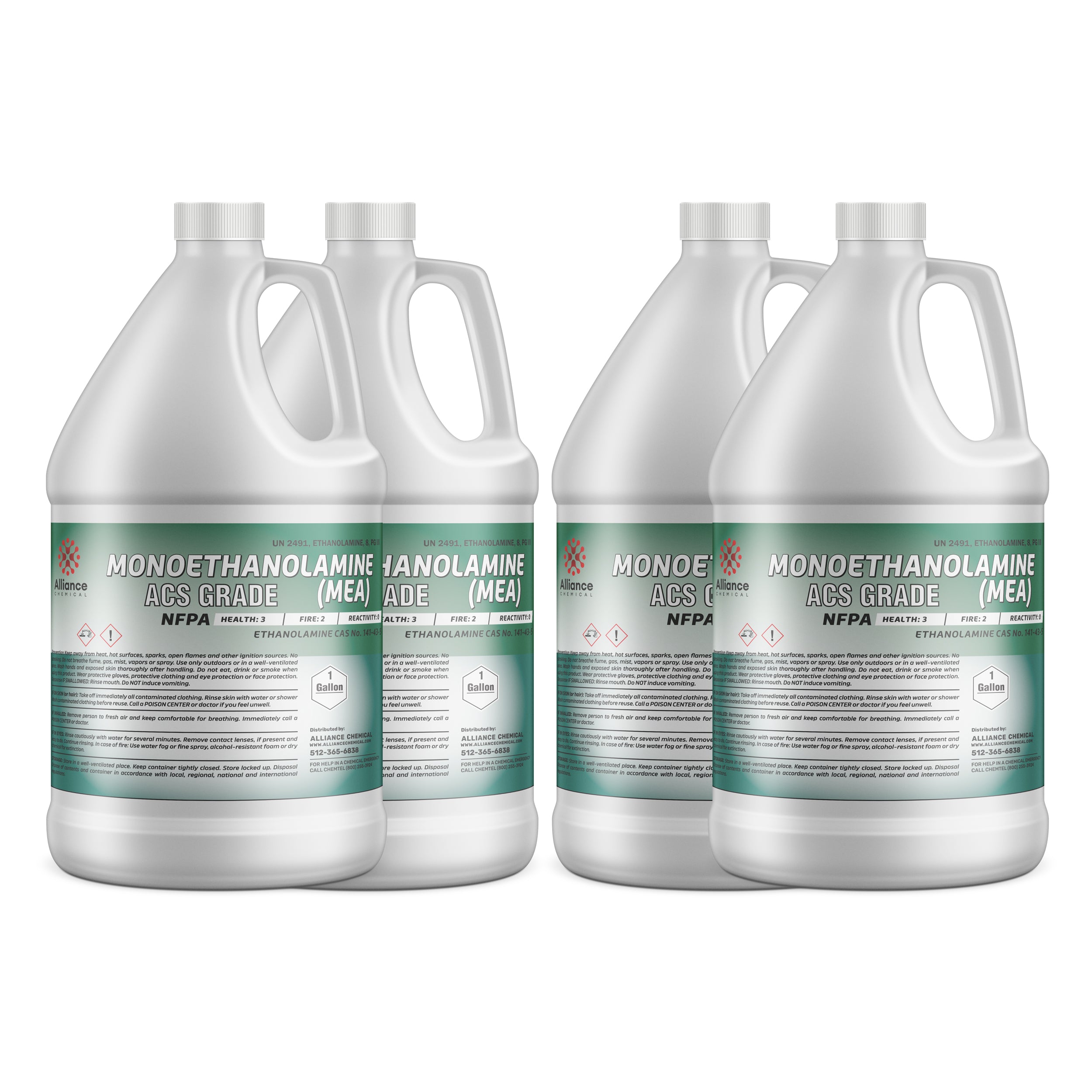
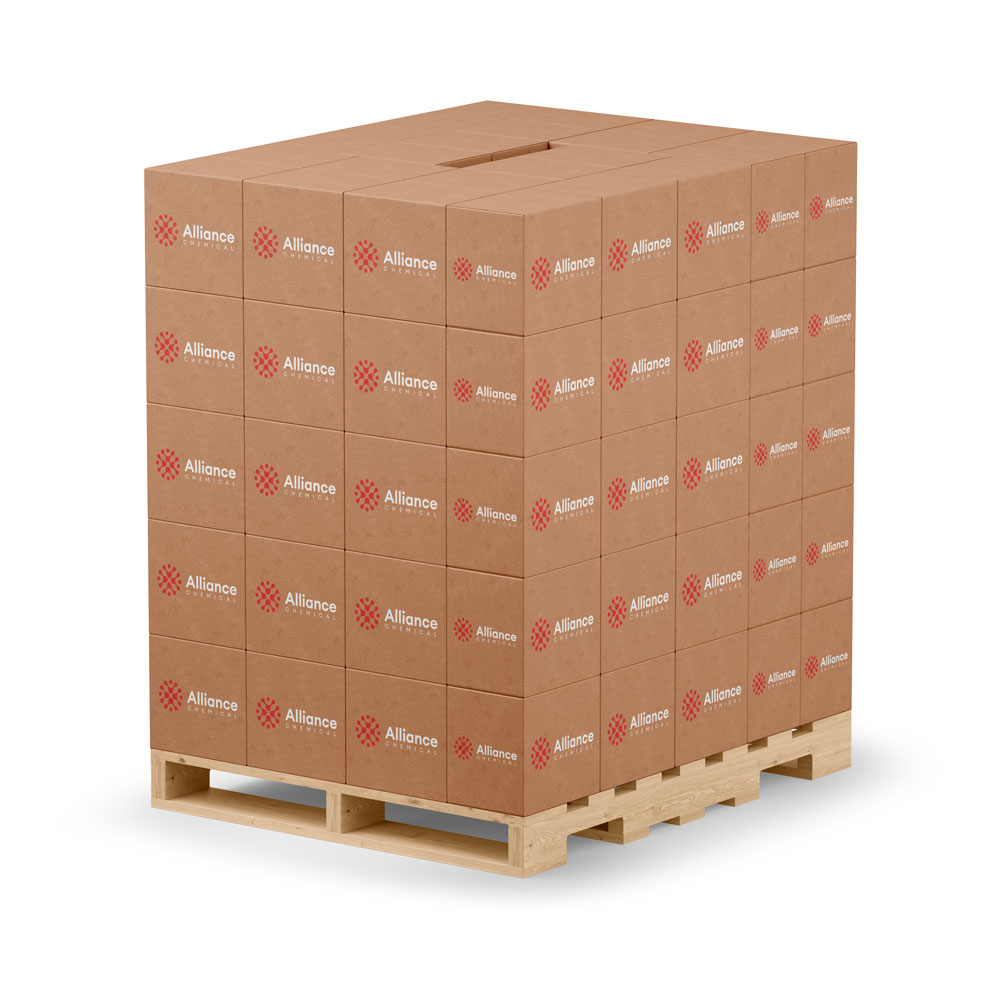
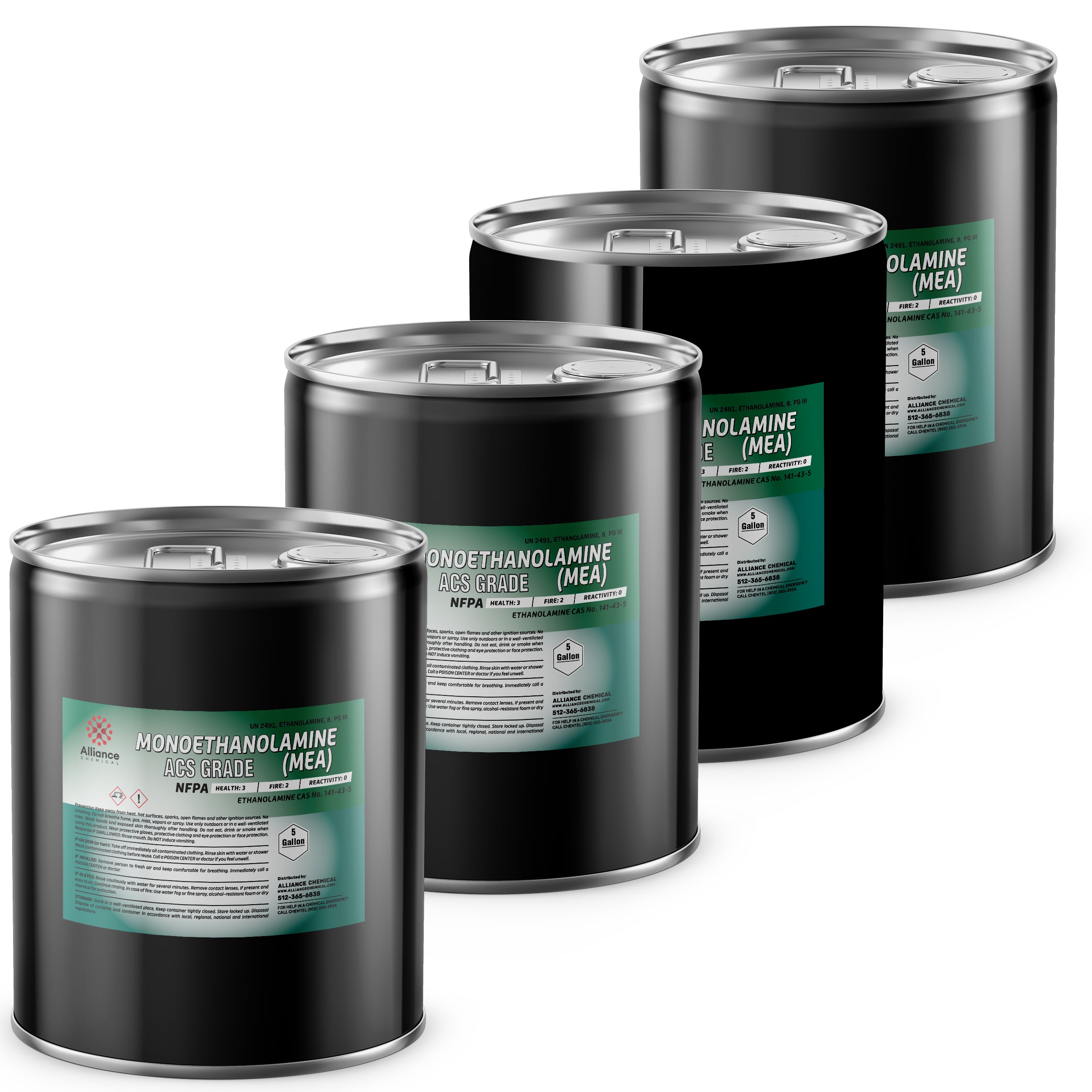
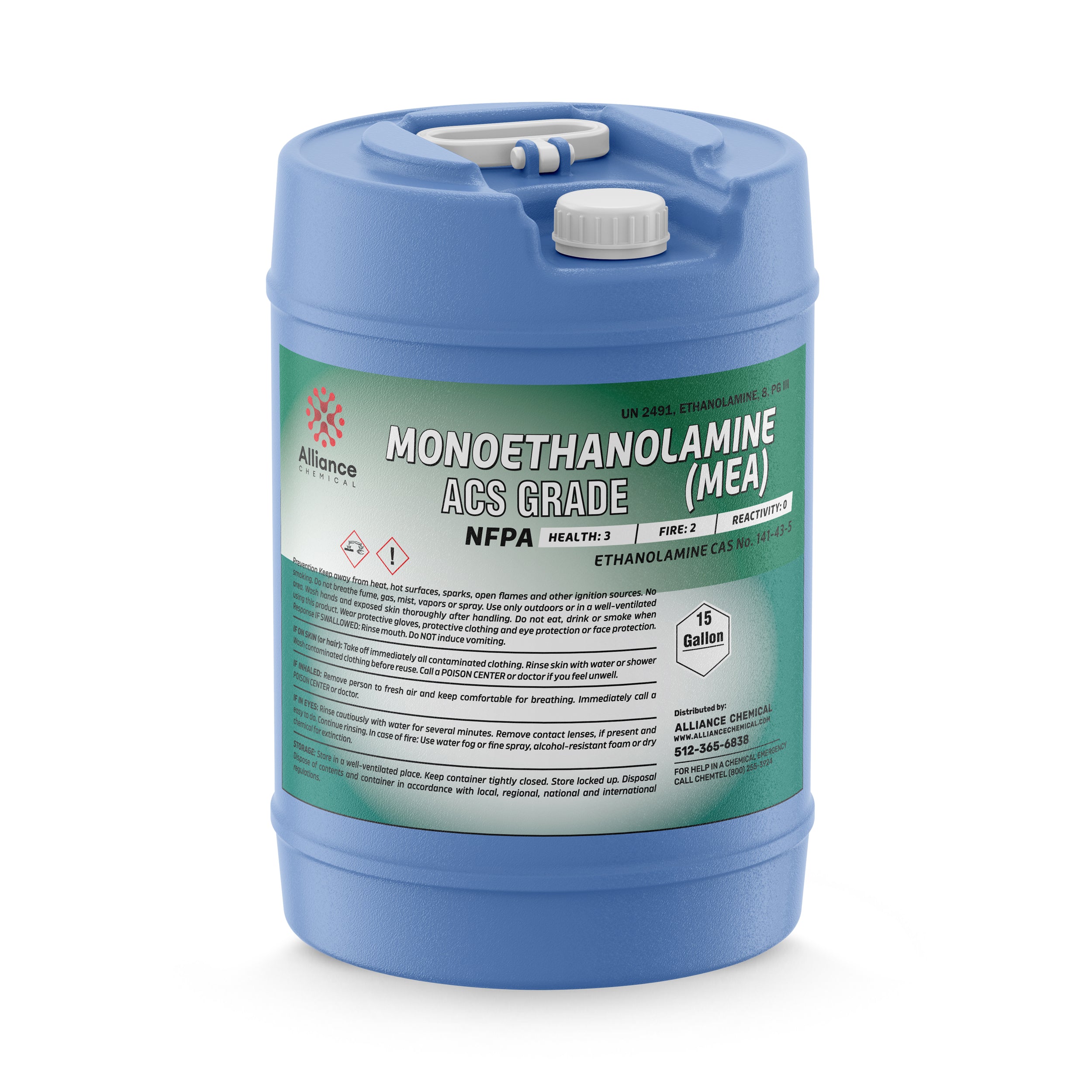
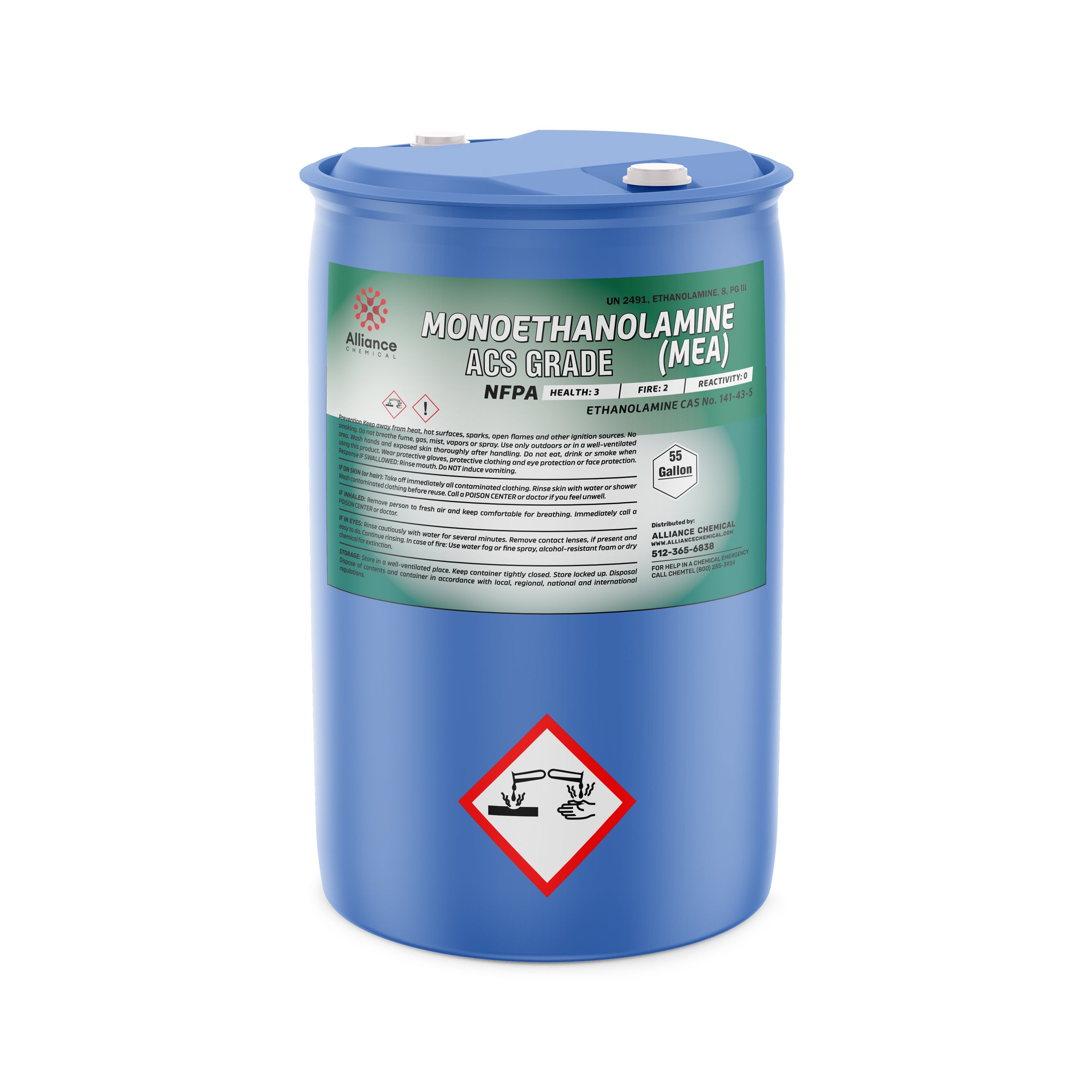
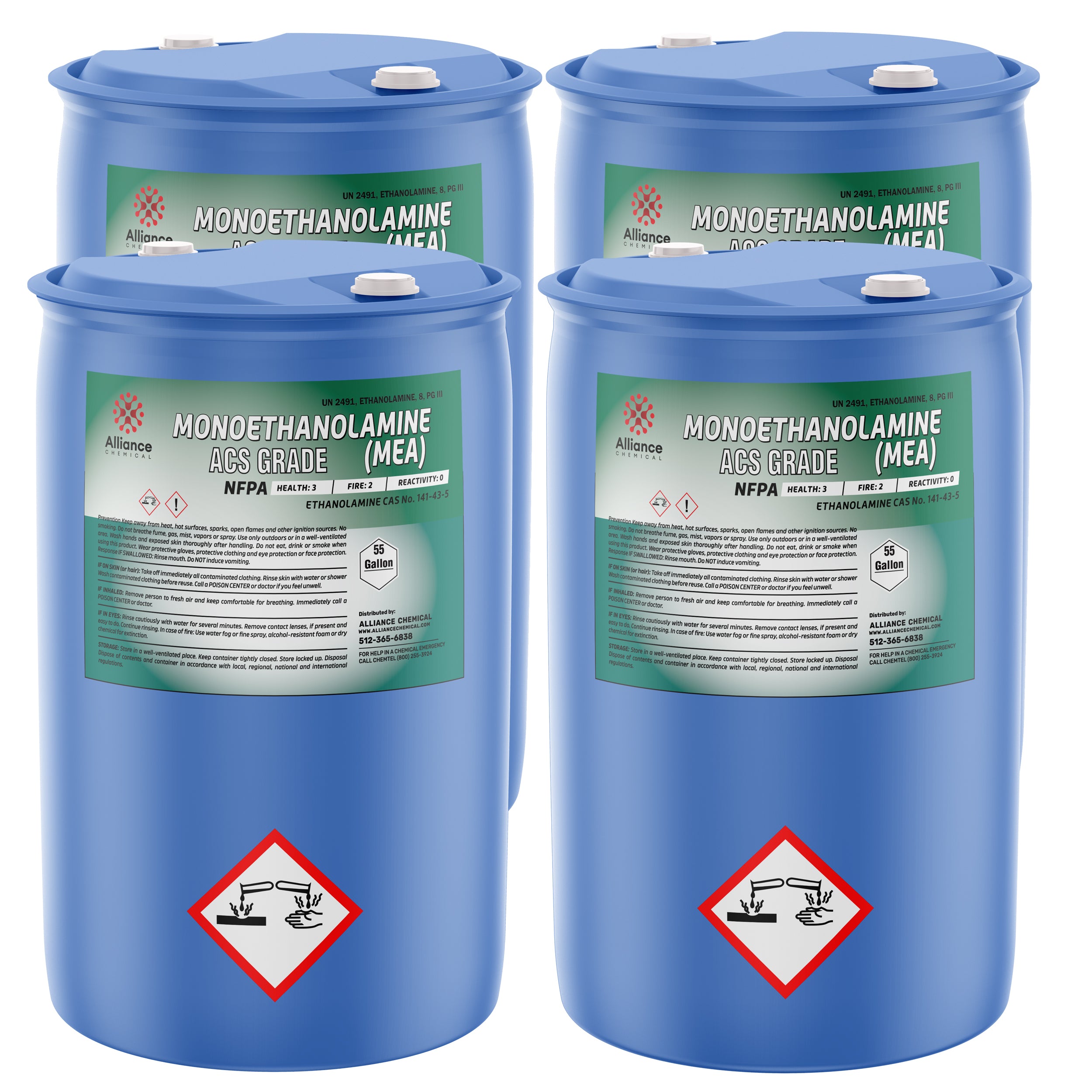
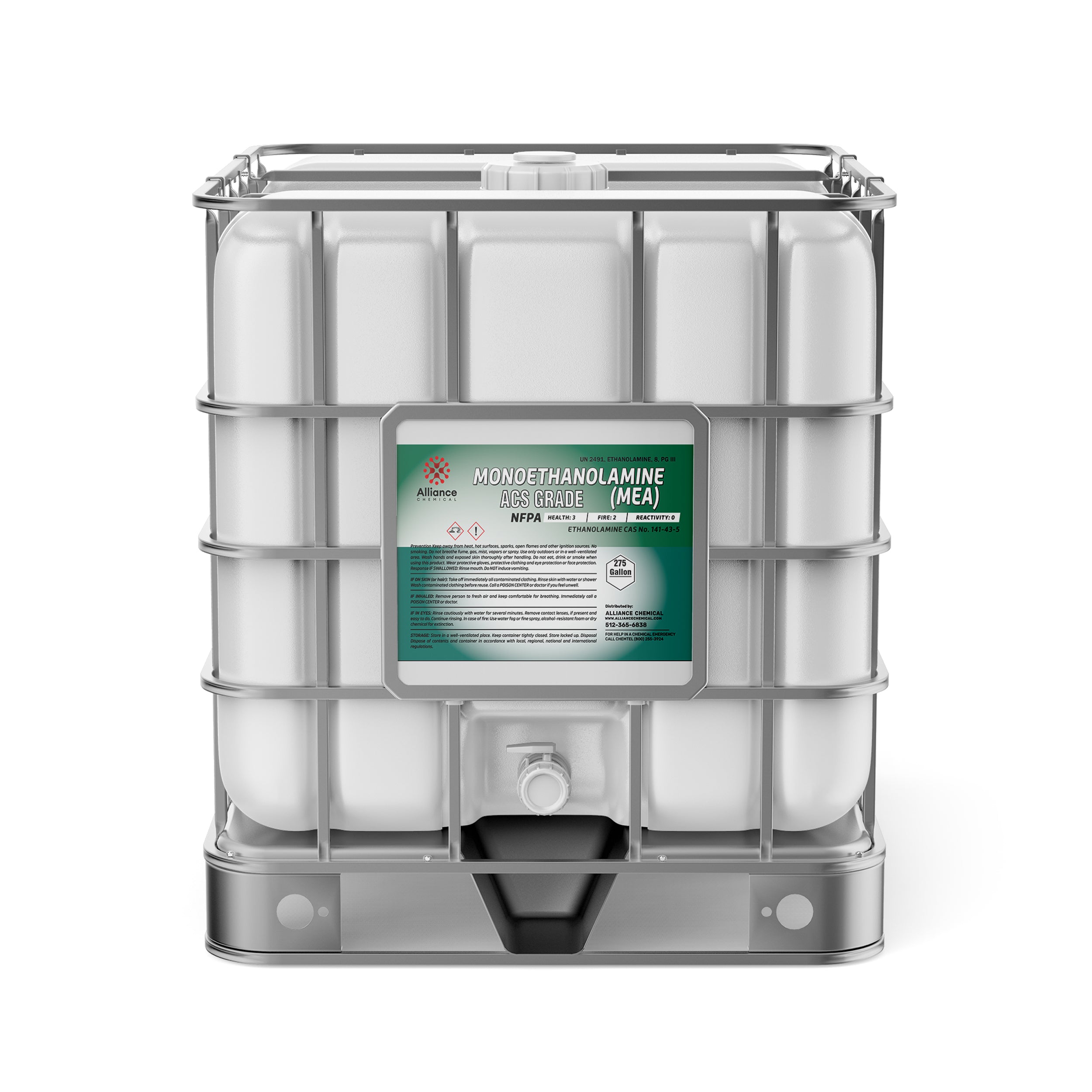
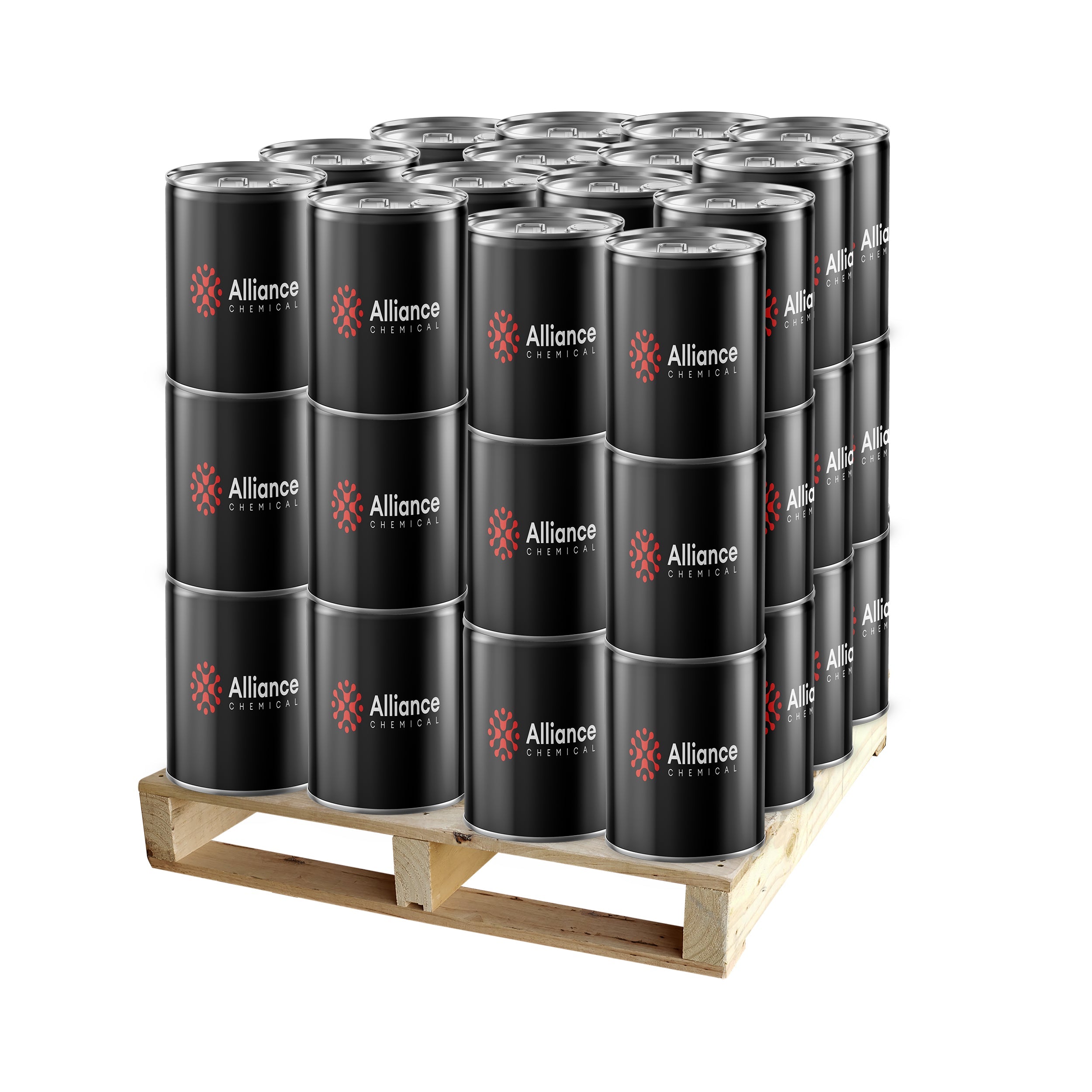
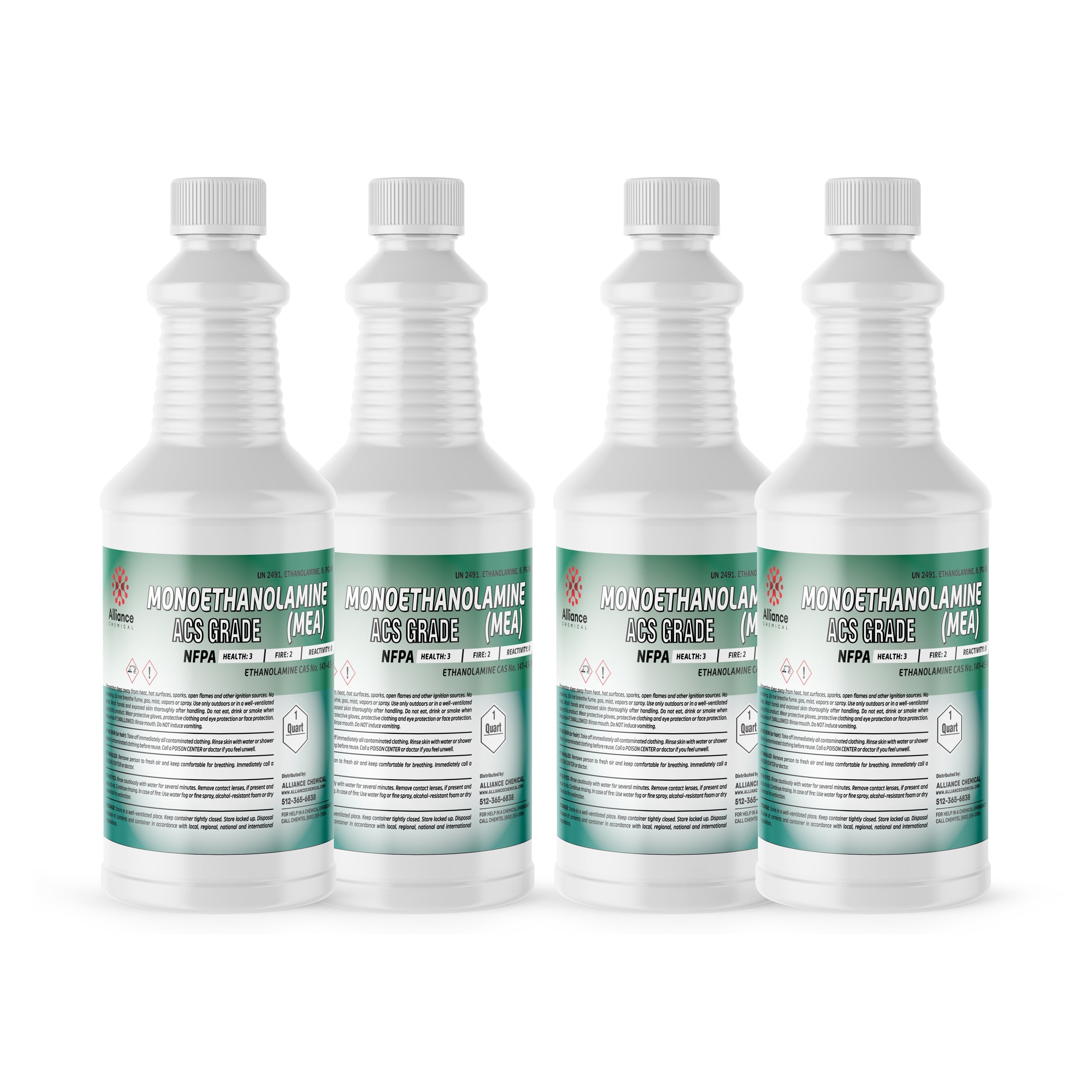
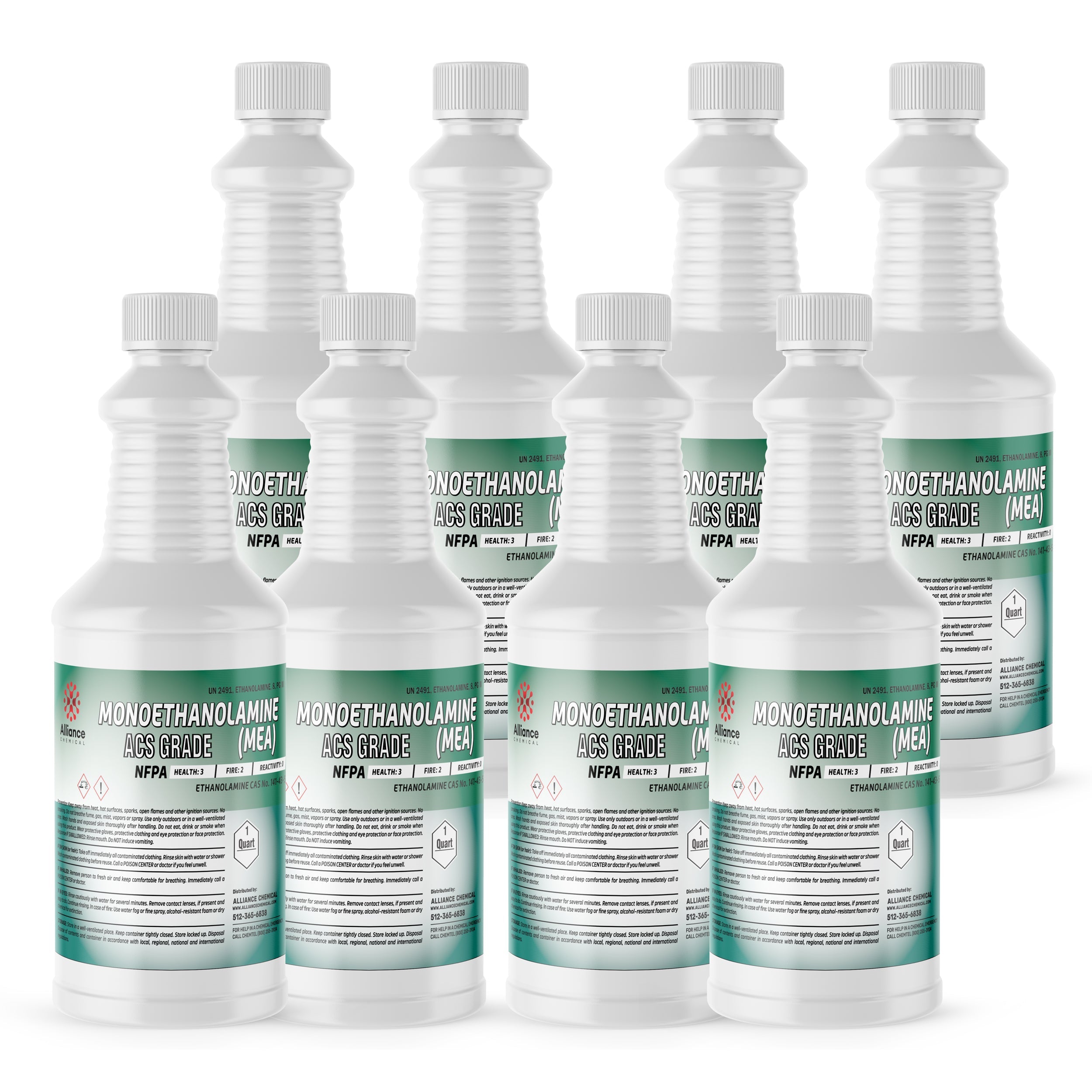
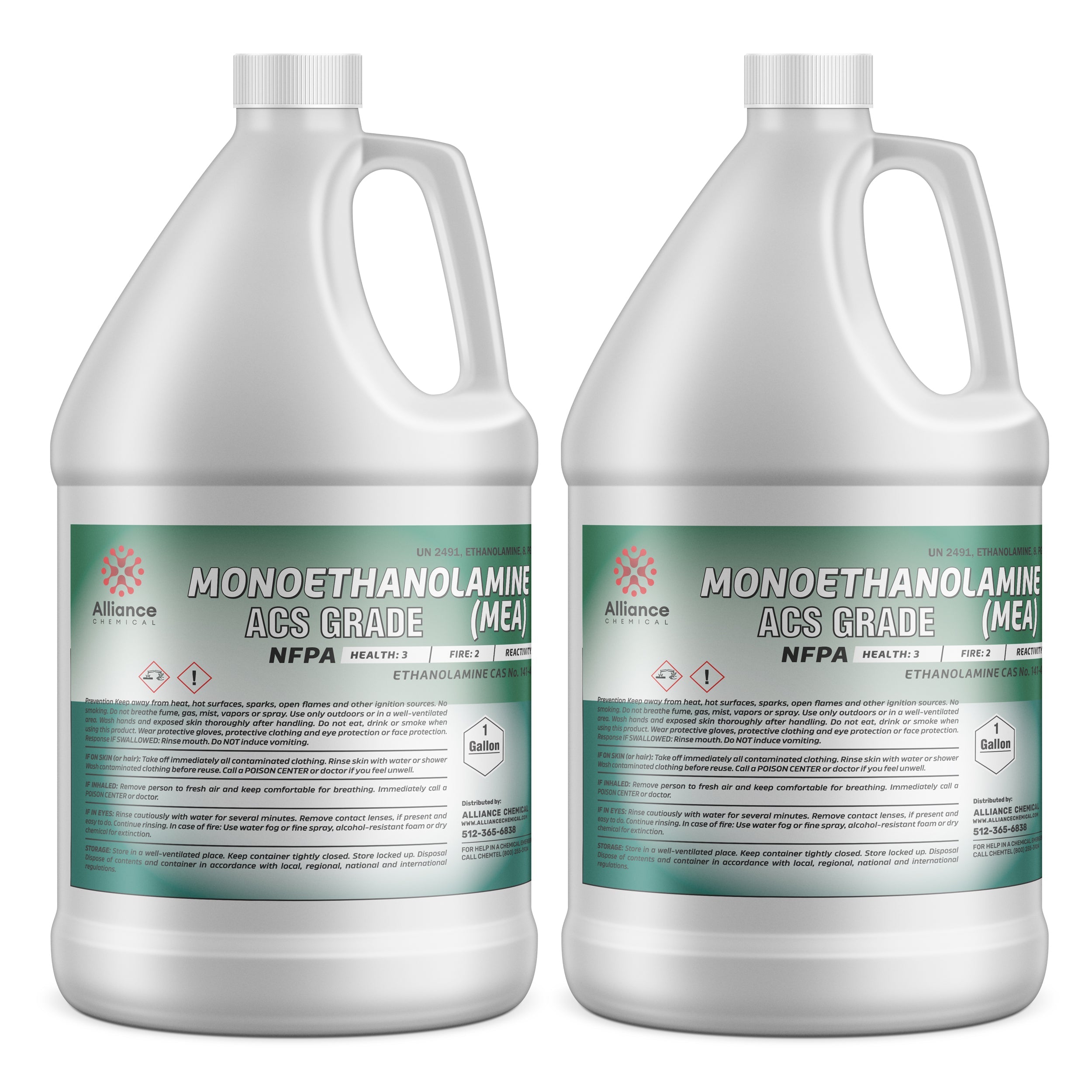
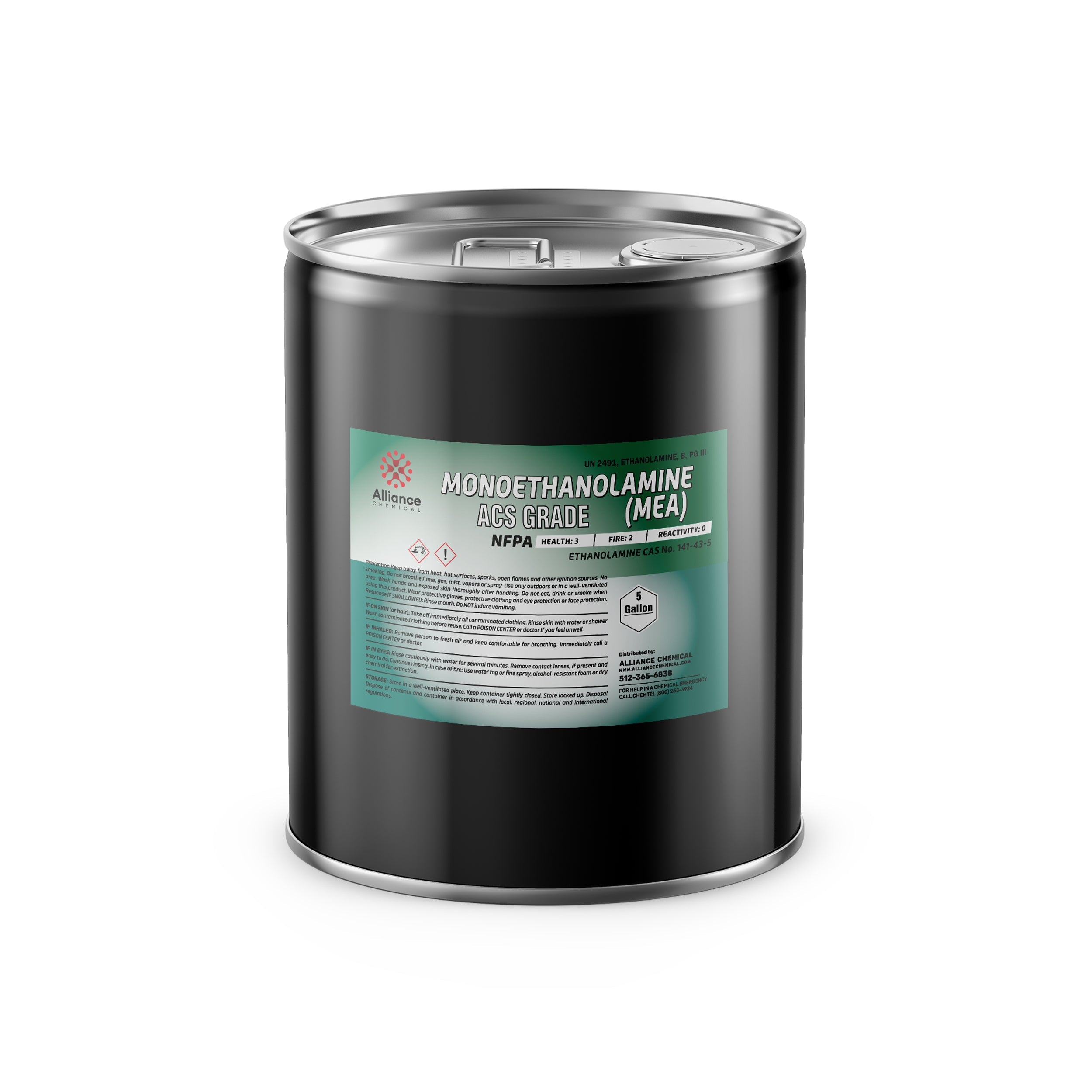

- Description
- Product Documents
Product Overview
Monoethanolamine (MEA) ACS Grade (CAS 141-43-5) is a high-purity, colorless viscous liquid with a mild ammonia-like odor. Also known as Ethanolamine or 2-Aminoethanol, this bifunctional chemical compound contains both a primary amine and a primary alcohol group. This dual functionality makes it an essential component in chemical synthesis, gas scrubbing, and pH control applications.
Our ACS Grade MEA is manufactured to meet stringent quality standards, ensuring a typical assay of ≥99.0%. It is rigorously tested to strictly limit impurities such as water, iron, and heavy metals, making it suitable for ACS Reagent Grade applications and sensitive analytical processes. The material exhibits a boiling point of 170°C and is fully soluble in water and alcohols. It is packaged in robust HDPE or glass containers to maintain purity and prevent moisture absorption during storage.
Key Properties
- CAS Number: 141-43-5
- Grade: ACS Reagent Grade (≥99.0%)
- Appearance: Colorless, viscous liquid
- Molecular Formula: C2H7NO
- Molecular Weight: 61.08 g/mol
- Density: 1.012 g/mL at 20°C
- Boiling Point: 170°C (338°F)
- Solubility: Miscible with water, methanol, acetone
- Flash Point: 93°C (200°F) Closed Cup
Common Applications
- HPLC Mobile Phase: Utilized as a modifier in high-performance liquid chromatography for the separation of basic compounds.
- Chemical Synthesis: Acts as a vital feedstock in the production of ethylenediamines, detergents, and pharmaceuticals.
- Gas Scrubbing: Highly effective for removing carbon dioxide (CO2) and hydrogen sulfide (H2S) from gas streams (gas sweetening).
- pH Control & Buffering: Used to neutralize acids and stabilize pH in water treatment and industrial formulations.
- Surfactant Manufacturing: A key intermediate in creating fatty acid amides and soaps.
Safety Precautions
Monoethanolamine is corrosive and can cause severe skin burns and eye damage. It is harmful if inhaled or swallowed. Appropriate Personal Protective Equipment (PPE), including chemical-resistant gloves, goggles, and face shields, is mandatory when handling this product. Ensure adequate ventilation or use respiratory protection to avoid inhaling vapors. Store in a cool, dry, well-ventilated area away from strong acids and oxidizers.
In the event of exposure, immediately flush eyes or skin with water for at least 15 minutes and seek medical attention. Refer to the Safety Data Sheet (SDS) for comprehensive handling and emergency procedures.
Benefits
High Purity: ACS Grade specification ensures consistent performance in analytical and synthesis workflows.
Dual Functionality: Combines amine and alcohol properties for versatile chemical reactivity.
Bulk Availability: Stocked in sizes from 1 Quart to 330 Gallon totes to support lab-scale to production-scale needs.
Quality Assurance: Traceable lot analysis confirming low impurity levels for critical applications.
Related Products
| Property | Value |
|---|---|
| Molecular Weight | 61.08 g/mol |
| Formula | C2H7NO |
| Grade | ACS |
| Flash Point | 85 |
| Form | Liquid |
| Solubility | Miscible with water and many organic solvents |
| Appearance | Clear, colorless liquid |
| Melting Point | 10 °C |
| Boiling Point | 170 °C |
| Specific Gravity | 1.018 |
| Industry | Industrial, Chemical |
Other top rated products
















FPQ-AMM-R4W
$21.95
Liquid error (snippets/product-blocks line 100): divided by 0
Off
Unit price
/
Shipping Notice: Possible Hazmat Fees
💡 Smart Shipping Tip: Quart & Liter Sizes Often Avoid Hazmat Fees
This size may be classified as hazmat and can incur additional carrier fees. See shipping guide
- ✅ Good news: 1 Quart containers qualify as "Limited Quantity" and bypass hazmat rules
- 💡 Pro tip: Order multiple 1 Quart containers to avoid hazmat fees entirely
- 💰 Hazmat fees can get expensive - especially for larger containers (carrier charges, not our markup)
- 🚚 Ground shipping only - no expedited options for sizes over 1 Qt/1L
Required by 49 CFR § 173.150 for chemical containers larger than 1 quart. Actual fees shown at checkout. View our complete shipping guide →
✅ Great Choice! No Hazmat Fees
1 Quart containers qualify as "Limited Quantity" and avoid hazmat shipping fees.
- 🚀 Faster shipping: Eligible for expedited shipping options including air transport
- 💰 No hazmat fees: Ships as "Limited Quantity" per DOT regulations
- 📦 Convenient size: Perfect for testing or smaller applications
- ♻️ Smart choice: Order multiple quarts to get the volume you need without hazmat charges
Exempted under 49 CFR § 173.150 Limited Quantity provisions for containers ≤1 liter/quart. Learn more in our shipping guide →
Size:
Variation:
-
$21.95Delivery every$20.85
-
$32.99Delivery every$31.34
-
$50.36Delivery every$47.84
-
$79.95Delivery every$75.95
-
$53.90Delivery every$51.21
-
$89.69Delivery every$85.21
-
$149.21Delivery every$141.75
-
$4,529.18Delivery every$4,302.72
-
$203.12Delivery every$192.96
-
$771.55Delivery every$732.97
-
$5,831.66Delivery every$5,540.08
-
$541.80Delivery every$514.71
-
$1,699.44Delivery every$1,614.47
-
$5,677.91Delivery every$5,394.01
-
$6,714.31Delivery every$6,378.59
-
$7,654.31Delivery every$7,271.59
Compare Products
| Price |
|---|
| SKU |
| Rating |
| Discount |
| Vendor |
| Tags |
| Weight |
| Stock |
| Short Description |
